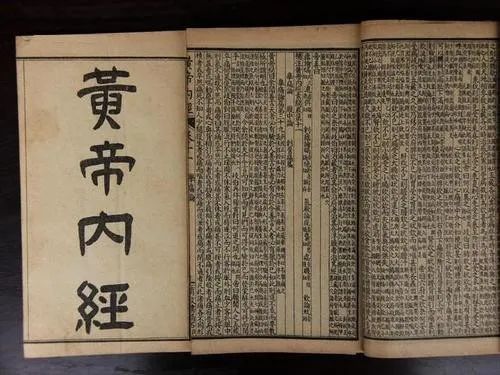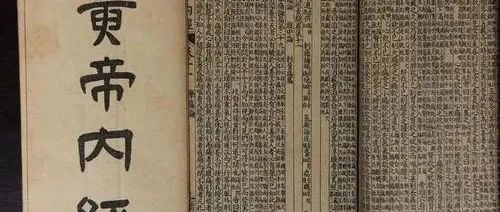The “Nurturing Methods for the Five Organs and Six Bowels” from the Huangdi Neijing describes the human body as a microcosm of the universe, where issues in the five organs and six bowels reflect larger problems in the body. The human body is a system that emphasizes balance and harmony, with each organ performing its role while supporting and restraining one another. Therefore, in ancient Chinese medical texts, the five organs and six bowels are treasures of the human body and vital for health preservation; they determine lifespan, dictate health, and nourish vital energy, forming the foundation of human wellness. “All five organs and six bowels possess spirit,” and only when they are harmonious and balanced can one achieve physical and mental health, fulfilling the goal of longevity.
The “Nurturing Methods for the Five Organs and Six Bowels” integrates the lifestyles and physical conditions of modern individuals, absorbing the essence of traditional Chinese health preservation, drawing from the millennia-old wisdom contained in the Huangdi Neijing, and addressing the actual conditions of modern bodies. It reflects on the modern living environment and, based on the five organs and six bowels, summarizes a series of effective health preservation methods.

Introduction: Adjusting the five organs and nurturing the six bowels can prevent the onset of diseases.
Chapter One: Health Preservation Begins with Nurturing the Five Organs and Six Bowels
Examining the connections between the five organs and six bowels through the Five Elements
Qi, blood, essence, fluids, and spirit are all stored within the five organs and six bowels
Yin-Yang balance is the foundation of harmony among the five organs and six bowels
The meridians are the supreme masters connecting the five organs and six bowels
Nourishing the five organs and six bowels must align with seasonal changes
The five colors and five flavors nourish the five organs, ensuring their proper function
Emotions such as joy, anger, sorrow, and happiness affect the five organs and six bowels
Chapter Two: The Heart is the “Ruler” of the Body; a Strong Heart Means Healthy Five Organs and Six Bowels
The heart is the master of the five organs and six bowels
Beauty begins with nurturing the heart
In summer, focus on heart health and align with the six seasonal changes
Gently tapping the heart protector meridian benefits the heart and strengthens the body
Regulating emotions can prevent harm to the body
Prioritize calming the heart before sleeping to ensure restful sleep
Kidney deficiency should also be addressed by nourishing the heart
Eating until 70% full at dinner is most beneficial for heart health
Bitter foods are beneficial for heart nourishment
Excessively salty or sweet foods are not good for the heart; maintain a balanced diet
Chapter Three: The Lungs are the “Chancellor” of the Body; Nurturing the Lungs Brings Beauty and Health
When lung qi is damaged, numerous diseases arise
Worry harms the lungs; the best way to nurture the lungs is to maintain a cheerful disposition
Nurturing the lungs in autumn prevents them from wilting like flowers
When breathing is obstructed, focus on synchronizing the heart and lungs
When phlegm is excessive, consuming yam, lily, and coix seed porridge nourishes the lungs and resolves phlegm
Spicy foods should be consumed in moderation as they affect the lungs
Massaging the lungs is effective; gently rubbing the nose promotes health
The H1N1 virus is merely a pestilence; its cause is the invasion of wind-heat into the lungs
Chapter Four: The Liver is the “General” of the Body; a Healthy Liver Means a Strong Body
The liver governs the eyes; to have bright and beautiful eyes, do not forget to nourish the liver
Spring and autumn are crucial for liver nourishment, with dietary supplements as a priority
Do not get angry; anger harms the liver!
Regularly massaging the “Di Jin” point is beneficial for the liver
New insights into depression: extreme liver qi deficiency leads to depression
For plum pit qi, the fundamental treatment is to soothe the liver and relieve depression
Stimulating the liver and gallbladder meridians not only benefits the liver but also aids in weight loss
Chapter Five: The Spleen is the “Mediator” of the Organs; a Healthy Spleen Ensures Body Safety
The spleen is the “foundation of postnatal life”; sub-health begins with the spleen
A healthy spleen and stomach are the keys to recovering from all chronic ailments
Spleen and kidney deficiency can lead to weight gain even from drinking water
“Longing” is an indescribable pain
Maintaining pregnancy requires strengthening the spleen and benefiting qi
If you cannot taste even shark fin, it indicates your spleen is overburdened
Chapter Six: The Kidneys are the “Parents” of Life; Disease Prevention Relies on Nourishing and Strengthening the Kidneys
Nourishing the kidneys is a lifelong essential task for both men and women
Feeling cold is a sign of kidney yang deficiency; supplementing kidney qi can help
The kidneys govern fear; supplementing kidney qi alleviates fear
Pressing the “Yongquan” point on the feet regularly strengthens the kidneys
Well-maintained kidneys help women stay youthful
Kidney deficiency should not be treated indiscriminately; distinguish between kidney yang deficiency and kidney yin deficiency
For those with chronic kidney issues, practicing breath-holding exercises at the hour of the tiger is beneficial
Hypertension and kidney disease are “twins”; herbal teas can help regulate them
Chapter Seven: The Gallbladder is the “Guardian of Justice” in the Body; a Healthy Gallbladder Resists External Pathogens
All eleven organs depend on the gallbladder
“The liver and gallbladder reflect each other” is not just a saying; practicing it leads to better health
Sleeping before midnight is beneficial for gallbladder health
Learning Taoist dietary practices ensures gallbladder health
Waking up with a bitter taste in the mouth is a typical gallbladder meridian issue; tapping the gallbladder meridian can prevent and treat it
Skipping breakfast regularly may lead to gallstones
Chapter Eight: The Stomach is the “Minister of Energy” in the Body; a Healthy Stomach Means a Good Life
The path to longevity lies in nurturing the stomach
A weak stomach means insufficient “electric energy” for the body
Millet porridge is a “great contributor” to appetite
Moving your toes can “kick away” old stomach ailments
Harmony between the spleen and stomach ensures lasting health
For stomach cold pain, a warm ginger and brown sugar drink can provide relief
Chapter Nine: The Small Intestine is the “Chef” of Nutrient Distribution; a Healthy Small Intestine Means a Healthy Body
The small intestine absorbs food and contributes to the “national treasury,” discarding the waste
For treating butterfly spots, investigate the absorption function of the small intestine
Sore throat can also be treated by strengthening the small intestine
Shoulder periarthritis is caused by poor qi flow in the small intestine meridian
Abdominal pain is often due to dysfunction in the small intestine’s processing
Chapter Ten: The Large Intestine is the “Conductor” of Waste; a Healthy Large Intestine Means Better Health
A beautiful intestine means beautiful skin
A smooth large intestine leads to overall comfort
Abdominal massage promotes digestion and benefits health preservation
Constipation and diarrhea can be treated by supplementing the large intestine’s “fluids”
Pressing the “Hegu” point can nourish the intestines and prevent strokes
Chapter Eleven: The Bladder is the “Disposer” of Waste Water; a Healthy Bladder Ensures Smooth Elimination
Massaging the bladder meridian helps eliminate obstacles to health and beauty
Urinary incontinence during coughing is due to poor bladder qi transformation
Regular urination benefits the bladder
Pain in the back of the head is caused by bladder weakness
Lower back pain, back pain, and leg cramps indicate that the bladder’s “liquid” cannot nourish the entire body
Chapter Twelve: The San Jiao is the “Regulator” of Qi, Blood, and Fluids; When the San Jiao is Clear, Diseases Do Not Arise
The San Jiao is the most unique concept among the six fu organs in TCM
When you hear a rumbling in your ears, look to the San Jiao for a solution
Each part of the San Jiao has its unique function
When qi and blood are stagnant, the first step is to clear the middle jiao
The “Xi” technique is a method recommended by our ancestors for regulating the San Jiao
If you find this article helpful,
please like, share, and spread it among friends who enjoy health practices!
Let more health-conscious friends study it!
The merit of sharing knowledge is immeasurable!
—— Click to view acupoints:3D Meridian Acupoint Map (a beautifully crafted edition for easy reference)
—— Click to explore practices:Classics Always Accompany
Please click to view: Health Preservation Highlights
Copyright Notice:This article’s videos and images are sourced from the internet,and this platform focuses on sharing and communication; copyright belongs to the original author. If there are any objections, please contact the editor for removal.
Warm Reminder:This platform shares health-related content for reference and communication only, not prescriptions, and may not be suitable for all populations..


